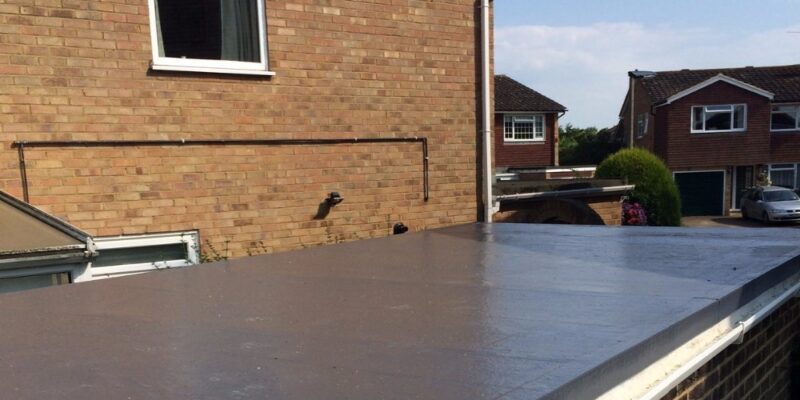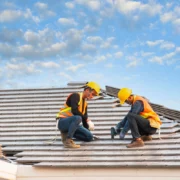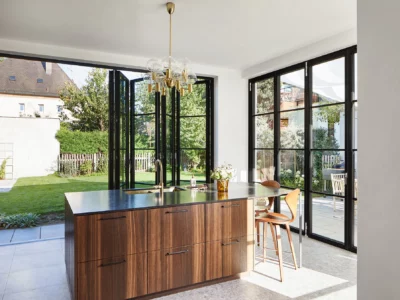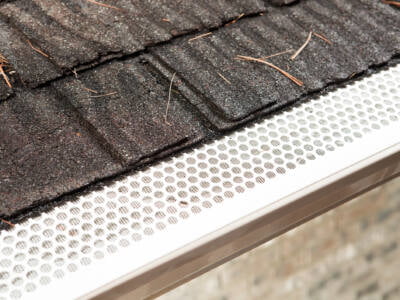Flat roofs are a popular choice for commercial and residential buildings, offering numerous benefits over traditional sloped roofing systems. Unlike pitched roofs which have a sloping surface, flat roofs have a level surface that can be used as an additional space for outdoor living, storage, or installation of solar panels. They are also attractive for their modern aesthetic and energy-efficient properties.
Flat roof installation requires proper planning and consideration of various factors such as the type and size of building, roof deck material, and climate. It is recommended to hire a professional flat roofing company to ensure the job is done safely and efficiently.
Regular inspections and maintenance are crucial for the long-term performance of flat roofs. Signs of damage such as air bubbles, tears, or cracks should be evaluated by a roofing professional to prevent leaks and other potential issues.
Preparation for Installation
Installing a flat roof can be a complex process that requires a great deal of preparation. Before any work can begin, it is essential to take some important steps to ensure that the installation process goes smoothly. Here are some key considerations to keep in mind when preparing for flat roof installation.
1. Roof Size and Square Footage: The first step in preparing for a flat roof installation is to measure the roof’s size and calculate the square footage. This will determine how much material is needed and give you a sense of the overall cost.
2. Material Type: There are many different types of flat roofing materials available, each with its own set of benefits and drawbacks. Some common choices include thermoplastic polyolefin (TPO), built-up roofing (BUR), and rubber roofing. Discuss with your roofing contractor a suitable material that suits your needs.
3. Roof Deck Condition: The condition of the roof deck is also an important consideration. Any damaged or rotting sections need to be repaired or replaced before the installation can begin. This will ensure that the roof has a stable and sturdy base to be installed onto.
4. Safety Considerations: Flat roof installation can be a dangerous job, so making sure that all safety considerations are met is essential. This includes ensuring that workers wear appropriate personal protective equipment, such as safety glasses, gloves, and hard hats.
5. Ease of Installation: The ease of installation is another important factor to consider. Some flat roofing materials are easier to install than others, and some require special techniques or equipment. Consulting with your professional roofing contractor on which material is right for your building.
6. Additional Protection: A flat roof can be vulnerable to foot traffic or other types of damage, making it important to consider additional protection measures. This may include adding a layer of protective coating or installing insulation to improve energy efficiency.
Hiring a Professional Contractor
When it comes to roofing projects, whether it be for a commercial building or a residential building, it’s important to choose the right contractor for the job. While some may opt to do it themselves or hire an inexperienced contractor to save some money, it’s important to consider the long-term benefits and potential issues that may arise.
One key advantage of hiring a professional roofing contractor is their knowledge and expertise in the industry. They have the experience necessary to assess your specific needs and provide recommendations for the appropriate materials and installation process. They’ll also be able to identify potential issues and provide solutions before they become costly problems.
Furthermore, a reputable roofing contractor will be licensed and insured, which provides added protection for you and your property. In the event of any accidents or damage occurring during the installation process, you are covered by their insurance, rather than being personally liable.
The Installation Process Step-by-Step
Flat roof installation is a complex process that requires careful planning and execution. It involves several steps, starting from the preparation of the roof surface to the final inspection of the installation. Here is a step-by-step guide to installing a flat roof:
Step 1: Preparation of the roof deck
The first step in installing a flat roof is to prepare the roof deck. This involves cleaning the surface of any debris and removing any signs of damage. If there are major signs of damage, the damaged areas may need to be repaired before installation.
Step 2: Installation of the roof boards
After the roof deck has been prepared, the next step is to lay down the roof boards. These boards are used to provide a level surface for the flat roofing materials and to add additional protection to the roof.
Step 3: Installation of the roofing membrane
The roofing membrane is the most important part of the flat roof installation process. There are different types of flat roofing materials available, including built-up roofing, rubber roofing, and thermoplastic polyolefin. The choice of material depends on the specific needs of the roof and the climate of the area.
Step 4: Application of adhesives and sealants
Once the roofing membrane has been installed, adhesives and sealants are applied to ensure that the roof is watertight. These products are used to seal the roof membranes together and create a barrier against water penetration.
Step 5: Final inspection of the installation
After the installation is complete, a final inspection is carried out to ensure that the installation has been done correctly. This involves checking for any signs of damage, air bubbles, or other issues that could affect the efficiency of the roof.
Summary
In conclusion, installing a flat roof on a commercial or residential building requires careful planning and consideration. It is important to choose the right type of flat roofing material that is suitable for your specific project and to hire a professional roofing contractor with experience in flat roof installation.










Comments